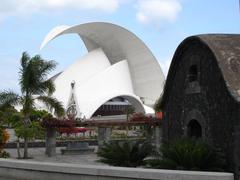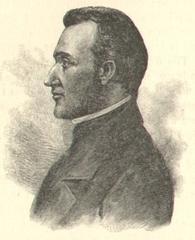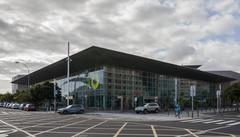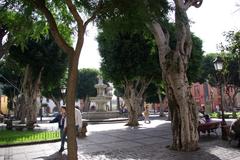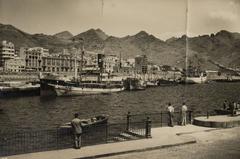Fuente de Isabel II: Visiting Hours, Tickets, and Comprehensive Guide to Santa Cruz de Tenerife Historical Sites
Date: 14/06/2025
Introduction
Located in the heart of Santa Cruz de Tenerife, the Fuente de Isabel II stands as a testament to the city’s 19th-century transformation and enduring cultural heritage. This neoclassical fountain, constructed between 1843 and 1845 by architect Pedro Maffiotte, reflects both the practical needs and artistic ambitions of its era. Today, Fuente de Isabel II is not only an architectural landmark but also a vibrant social gathering place, seamlessly integrated into the urban fabric of Plaza de Isabel II.
This detailed guide provides everything you need to know about visiting the Fuente de Isabel II, including its historical context, design highlights, practical visitor information, nearby attractions, and travel tips. Whether you are a history enthusiast, architecture lover, or casual traveler, this resource will help you appreciate the fountain’s significance and make the most of your visit to Santa Cruz de Tenerife.
(Lainakai, Vende Visita Tenerife, Santa Cruz de Tenerife Official Website)
Table of Contents
- Introduction
- Historical Background
- Location and Urban Setting
- Design and Materials
- Artistic Elements
- Functional Significance
- Visiting Information
- Conservation and Community Value
- FAQ
- Summary and Traveler Tips
- References
Historical Background
Urban Context and Origins
The early 19th-century expansion of Santa Cruz de Tenerife, especially in the El Toscal neighborhood, created a pressing need for accessible water sources. Before the advent of modern plumbing, residents relied on natural springs and ravines, which soon became insufficient as the city grew. The construction of public fountains was essential for both domestic use and the city’s burgeoning port activity (Lainakai, Canarízame).
Construction and Architectural Features
Commissioned in 1843 and inaugurated in 1845, the Fuente de Isabel II was designed by Pedro Maffiotte, a leading architect and professor in Santa Cruz. The fountain embodies romantic classicism and the neoclassical style that was prominent during Queen Isabel II’s reign. Crafted from local blue basaltic granite, the structure features a stepped base, oblong water basin, six Tuscan columns, and five bronze lion head water spouts. It is crowned by the city’s coat of arms, symbolizing municipal pride and identity (Santa Cruz de Tenerife Official Website, The Heart of Tenerife).
Civic and Social Role
Beyond its utility, the fountain quickly became a focal point for community life. Residents gathered here to collect water, share news, and socialize. Its location at the intersection of key city streets made it a natural hub for both locals and travelers (Canarízame). In the late 19th century, the fountain supplied water for both domestic needs and maritime provisioning, playing a critical role in the city’s economic and social development.
Symbolism and Cultural Significance
The fountain’s dedication to Queen Isabel II and its incorporation of classical motifs—such as lion heads and the city’s coat of arms—underscore its symbolic role as a monument to civic progress. Over time, it has become a cherished feature of Santa Cruz, representing the city’s evolution and pride (canariasratitosdenuestrahistoria.blogspot.com).
20th-Century Changes and Preservation
Despite urban development and the advent of modern water infrastructure, the Fuente de Isabel II has retained its historical and aesthetic value. Restoration efforts by the municipality have ensured its preservation as a protected heritage site. The plaza surrounding the fountain continues to host social and cultural activities, reinforcing its role in community life (Paseando x Santa Cruz).
Location and Urban Setting
The Fuente de Isabel II is located in Plaza de Isabel II, at the start of Calle de la Marina. This strategic position places it within walking distance of Santa Cruz’s main cultural and commercial attractions, including Plaza de España, the Auditorio de Tenerife, and the Mercado de Nuestra Señora de África (vendevisitaatenerife.com).
The surrounding plaza has held various names throughout its history, such as Chorro de Isabel II and La Pila, reflecting its lasting significance in the city’s urban landscape. Notable nearby landmarks include the Edificio Núñez, a striking example of rationalist architecture.
Design and Materials
The fountain’s neoclassical design is characterized by balanced proportions and restrained ornamentation. It is built in the Tuscan order, featuring simple columns and harmonious symmetry. The use of blue basaltic granite, a durable local stone, connects the monument to the island’s geological heritage and has allowed it to withstand the passage of time (vendevisitaatenerife.com).
Artistic Elements
Central to the fountain’s artistic appeal are the five bronze lion head water spouts, symbolizing strength and the connection to the Spanish monarchy. The interplay of water and sculpture, along with the city’s coat of arms crowning the fountain, create a dynamic and visually engaging centerpiece for the plaza.
Functional Significance
During its early years, the fountain was a vital source of potable water for residents and ships. In 1856, a reservoir was installed behind the fountain to extend fresh water supply to the port, highlighting its importance in the city’s infrastructure. Today, it serves as an ornamental and cultural landmark, drawing both locals and tourists (vendevisitaatenerife.com).
Visiting Information
Hours and Admission
- Open: 24 hours daily, year-round, as an outdoor public monument.
- Admission: Free of charge.
Accessibility
- The plaza is pedestrian-friendly, with paved walkways and seating. While the fountain area includes some steps, accessible pathways are available nearby. Visitors with mobility issues should take care on uneven surfaces.
Getting There
- By Public Transport: Easily accessible by tram and city buses (“guaguas”), with nearby stops.
- By Taxi/Car: Taxis are available, and several parking lots are located within walking distance.
- On Foot: The area is central and walkable, ideal for exploring the historic city center (El Corazón de Tenerife).
Guided Tours and Special Events
- Many local tour operators include the fountain in their walking tours, providing historical and architectural insights.
- The plaza occasionally hosts markets, community gatherings, and is particularly lively during local festivals such as the renowned Carnival of Santa Cruz de Tenerife (Guide to Canary Islands).
Nearby Attractions
- Plaza de España: Main city square with impressive water features.
- Parque García Sanabria: A lush park ideal for relaxation.
- Auditorio de Tenerife Adán Martín: A modern architectural highlight.
- Mercado de Nuestra Señora de África: A bustling local market with Canarian products.
Photography and Etiquette
- The fountain’s neoclassical lines and bronze details make it a popular photography subject, particularly in early morning or late afternoon light.
- Visitors should avoid climbing or sitting on the fountain and respect the site during events or busy periods.
Conservation and Community Value
The Fuente de Isabel II is an officially recognized cultural heritage site and a focus of ongoing preservation efforts. Municipal initiatives, educational programs, and guided tours raise public awareness of its historical value, ensuring that future generations can continue to enjoy this monument (santacruzdetenerife.es).
Frequently Asked Questions (FAQ)
Q: What are the visiting hours for Fuente de Isabel II?
A: The fountain is accessible 24/7 as it is located in a public plaza.
Q: Is there an entry fee?
A: No, visiting the fountain is free.
Q: Are guided tours offered?
A: Yes, many local tourism offices and operators include the fountain on their walking tours.
Q: Is the fountain accessible for people with disabilities?
A: The plaza is generally accessible, with alternative pathways for those with mobility challenges.
Q: Can I take photographs at the fountain?
A: Absolutely—photography is encouraged, but please respect the monument and avoid climbing on it.
Q: What are the best times for photography?
A: Early morning and late afternoon provide the best natural light for capturing the fountain’s details.
Summary and Traveler Tips
Fuente de Isabel II stands as a symbol of Santa Cruz de Tenerife’s historical evolution, civic pride, and artistic achievement. This 19th-century neoclassical fountain offers visitors a unique opportunity to experience the city’s heritage firsthand. Its convenient location, free access, and proximity to other major attractions make it an essential stop for anyone exploring Tenerife’s capital.
Top Tips:
- Combine your visit with a walking tour of the historic center.
- Visit nearby markets and sample local Canarian cuisine.
- Take time to appreciate the architectural details and learn about the fountain’s role in the city’s development.
- Check the official tourism website for updates on events and accessibility.
References
- Lainakai
- Vende Visita Tenerife
- Tenerife Antiguo
- Canarias Ratitos de Nuestra Historia
- Santa Cruz de Tenerife Official Website
- Diario de Avisos
- Santa Cruz de Tenerife News
- The Heart of Tenerife
- El Corazón de Tenerife
- Guide to Canary Islands
Ready to explore the heart of Tenerife’s history? Download the Audiala app for guided tours, follow us on social media, and visit the Santa Cruz de Tenerife Official Website for the latest information on events, accessibility, and travel tips.
